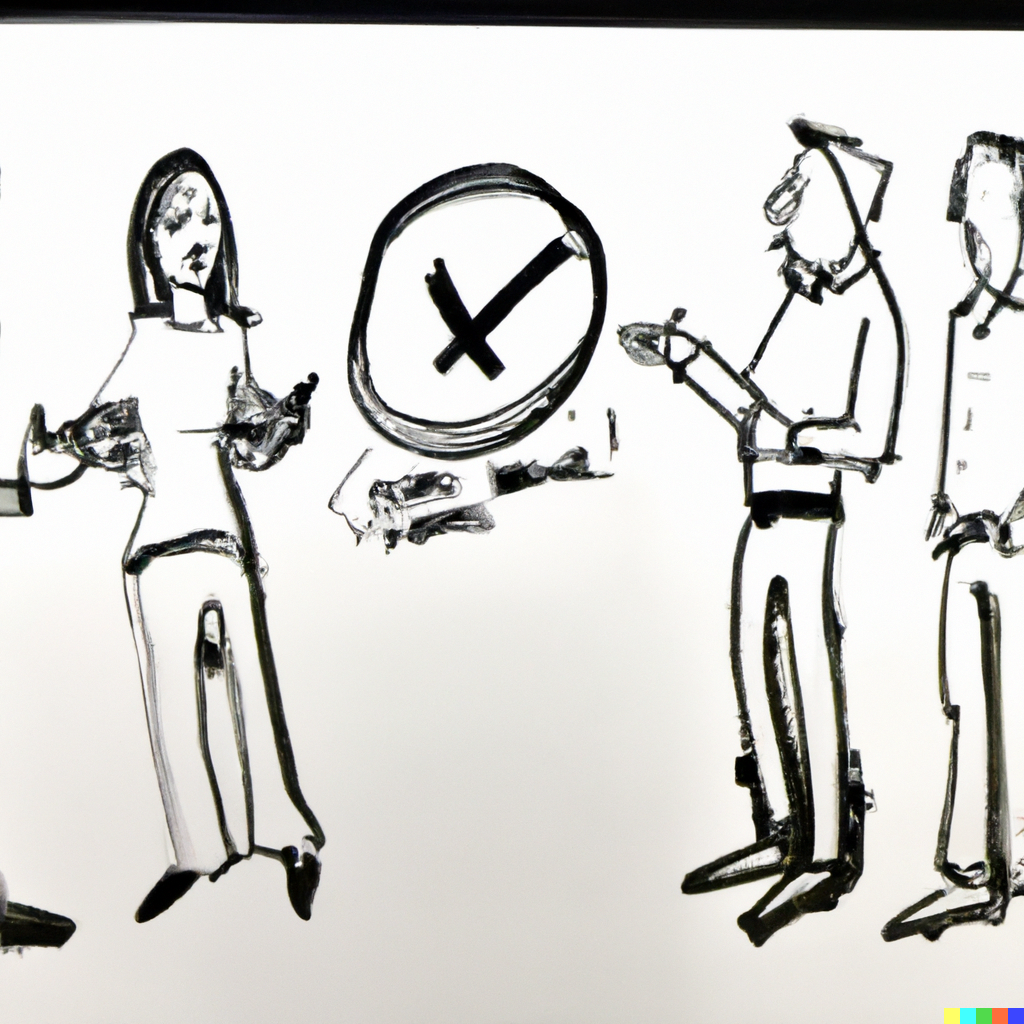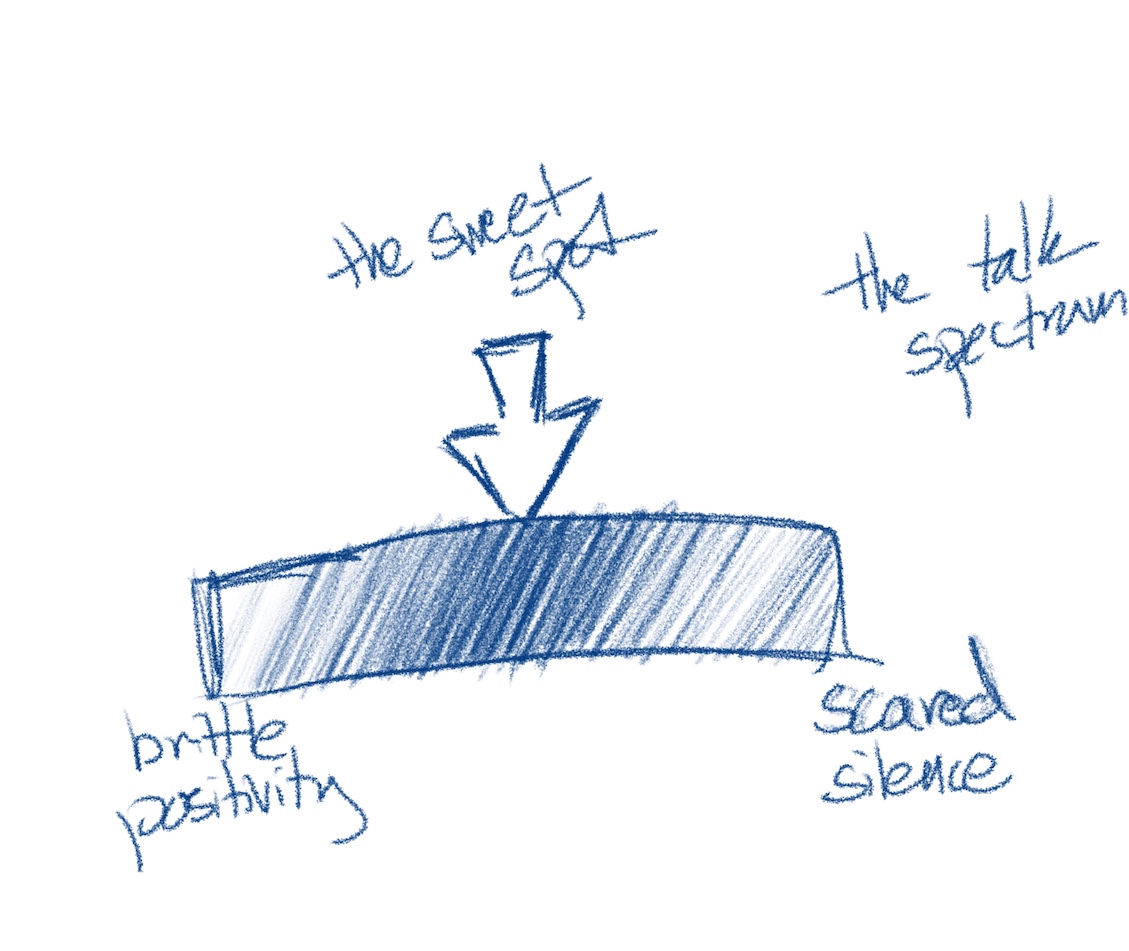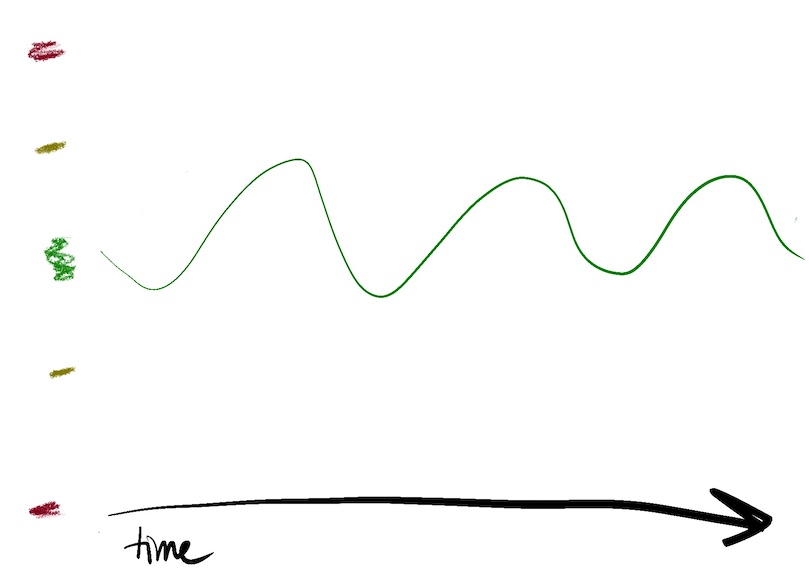Highway To The Discomfort Zone: Promoting constructive conflict as an IC
Discomfort is a feeling I’ve experienced a fair amount of in my technology career. There are tons of types of discomfort: discomfort of being wrong, discomfort of learning a new technology, discomfort of trying to accomplish something you didn’t think you could. But social discomfort is something I don’t see talked much about from a first person perspective. I believe especially for individual contributors who take on leadership responsibilities, being someone who appropriately generates discomfort within themselves and their team is an important way to help move your team forward.
Since Google’s Project Aristotle there have been numerous articles about how to cultivate psychological safety within teams. But this is all from a top down perspective, as a manager. What if you’re an individual contributor? How do you make sure you’re playing the right role? Especially when it comes to trying to figure out whether to say something and what the right way to say a thing is.
As I talked about in my :reflections about the psychodyssey documentary, discomfort is a significant part of daily life on tech teams. Especially ones that are trying to solve challenging problems. Finding the right level of discomfort is crucial to productivity and happiness. A little bit of discomfort can indicate a healthy amount of task-based conflict, encourages teammates grow, bring up productive disagreements, and work towards an optimal solution. But excessive discomfort can hinder productivity and destroy the psychological safety of the team.
Replacing Discomfort as a Sign-Post
From a personal perspective, I tend to read discomfort as a sign that things are going wrong. It’s bad… right? And I often find myself taking a step back and trying to reinterpret signals of discomfort as something other than bad. Productive discomfort is good, but in order to be ok with that feeling, we have to replace discomfort as a signpost with other things.
Dall-E: a sharpie sketch of a team of people at a whiteboard who are disagreeing productively 
Silence
How can you tell if you’re on a team that’s in a healthy space when it comes to psychological safety and task based conflict? I’ve found that the clearest negative indicator is silence. If teams aren’t sharing direct, specific criticism, or voicing(/writing) disagreements, it tends to be an indication that there’s not enough productive discomfort going on.
Finding the sweet spot of discomfort 
What’s interesting is these lack of feedback situations can occur for wildly divergent reasons. A team might be socially content and not want to share constructive feedback because it will disrupt a feeling of social harmony. Or, a team might be in an incredibly toxic situation socially/emotionally and not want to speak up for fear of personal or emotional dismissal or retribution. Distinguishing between these types of conflicts can be challenging.
Personal Opinions
On a personal level, what this really comes down to is understanding how and when to share your opinions. There are plenty of reasons I’ve struggled with discomfort when sharing my opinions:
- Strong beliefs that I’m concerned about getting into a large conflict about
- Being unable to articulate an opinion I might have
- Being concerned about inadvertently insulting someone with a critique of their code or their approach
The short answer, is, you should try to push through your discomfort and share your beliefs/questions/in-articulate opinions when necessary. One thing that’s worth remembering is that if a team is in a good place of productive discomfort, it’s ok if you shift a bit in one direction or another (social harmony or too much conflict). Sometimes it can feel like the standard is to not ever say anything that might be inadvertently offensive or hurtful. This also applies to personal discomfort about being told you’re wrong or your perspective was inaccurate or incomplete. I’ve found most people are very forgiving about polite, thoughtful experimentation and mistakes when it comes to
How to Push Through
I know people say you should be more assertive and apologize less. But I’m pretty skeptical that apologizing is ultimately a net negative. If, especially at the start, you need to preface something with sorry in order to feel comfortable pointing something out, you should say sorry. The net outcome of the insight you have to share after the sorry is worth way more than the cost saying nothing might have.
It's important to remember positive/negative team conditions oscillate over time 
But, here are a list of framing techniques I’ve used to help push through discomfort I’ve felt when trying to share or open up with a team:
- Be clear about your awareness of your perspective in the critique
- I think, I see I notice
- This leads me to conclude
- Be as specific as possible about what you’re trying to articulate
- Stay away from associating any critiques with someone’s identity or beliefs
- If you have a vague feeling but can’t articulate clearly, call that out to start
- If you feel frustrated about a particular situation, call it out. Be honest about your emotional response and specific about what triggered it
What If You’re Too Far One Way or The Other?
Let’s start with the less fun one. If you’re on a toxic team, it’s important to remember that this is one of those situations where, as an IC with leadership responsibilities, you have to decide if you’re committed to being there. And that will be some of what you’re trying to suss out through the process. What I would tend not to recommend doing is bringing up the concerns in a public forum. I would try to approach the issue with a trusted sponsor, outlining specific instances you have concerns about and connect them to the company’s values where you believe things are being missed or let down. It’s also worth noting in this situation it’s very possible you will be labeled the toxic element. And that’s… going to be rough, but will help inform whether or not this is a place you can be.
Especially in this economic environment taking these steps and making such a decision can be a real challenge. If leaving or pushing aren’t options, taking a step back from the leadership role, or removing yourself from the situation could be short term answers.
And now for the happy one. Teams that have too much social contentment are in a better place, because you have more space to nudge a bit. What I’ve found the most successful are finding specific principles you’d like the team to aspire to, and give direct feedback related to those areas. This is where discomfort can be a good guide. You should give (polite) clique that makes you feel uncomfortable, and see how the person responds. And be patient. The goal here isn’t to go from 0 to task based conflict overnight. It’s to help open up areas where people feel like they can give critiques
Experimentation is Key
Ultimately, the only way out is through. Interjecting, raising concerns, and finding ways productively introduce task based conflict isn’t a perfect science. The growth step is to move away from looking at discomfort as a negative, and looking more at the outcomes that discomfort creates. Did it lead towards better project outcomes? Worse project outcomes? Do people feel more open and honest because of direct conversation? Or did something you say inadvertently flatten or discard someone else’s opinion’s? Be on the lookout for these sorts of outcomes as feedback that can guide you in the right direction.